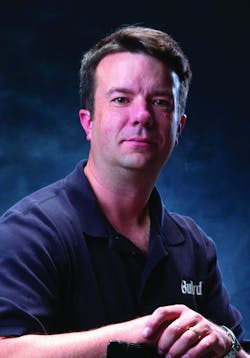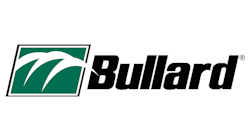One of the best and most popular uses for a thermal imager (TI) is during overhaul. A TI can be a blessing to you in determining how far a fire may have extended. Using a TI for overhaul, however, can also be challenging and frustrating, if you don’t understand what areas truly need overhaul. So, what value does a TI bring to overhaul?
First, thermal imaging technology helps identify hot spots that you may otherwise miss. When I say hot spots, I really mean warm spots and when I say warm spots, I really mean warmer-than-cold-spots. Why is this important? Because many firefighters have become quite adept at locating and overhauling those spots that are obviously hot; however, the TI can determine temperature differences as small as 1/12th of a degree Fahrenheit, giving you the ability to determine temperature differences that truly indicate whether a smoldering rafter has been “extinguished.” This sensitivity reduces the likelihood of a rekindle and additional property loss as well as saves you the embarrassment of having to put it out again.
Second, by identifying specific areas of concern, you can limit your overhaul efforts to true areas of concern. In certain instances, entire sections of wall may be saved by proper use of a TI. Last, by guiding firefighters promptly and specifically to hotspots, firefighters spend less time on scene and do less work. This reduces the chance of injury and places companies back in service sooner.
Imager functions
Depending on the type of TI you have, you can rely on one of at least three functions that can help you assess temperature differences in an object or area: colorization, temperature indication and change in the TI’s sensitivity or gain mode. Let’s look at these most common aids:
• If your TI has hot-spot colorization, hotter objects will be shown in color. In overhaul, depending on the temperature thresholds for color activation on your TI, you can identify hotter objects as they will often appear as a certain color. On some TIs, this mode is manually activated so that you can control the threshold at which the color activates, helping to isolate hot spots.
• Most TIs today have a temperature indicator. Make sure you understand its uses and limitations. By comparing the temperatures of various surfaces, you may be able to identify sections of walls that deserve additional attention during overhaul.
• All microbolometer-based fire service TIs use at least two different gain modes. When a TI switches modes, it is often noticeable. This mode switch indicates that the TI has changed sensitivity levels. Most TIs change to lower sensitivity levels when something in the image is very hot, enabling the TI to show detail of higher heat objects. This mode switch is usually accompanied with an image freeze (the firing of the TI’s shutter). The image freeze and the change in sensitivity are indicators that a significant hotspot remains in the scene.
The more skilled you become with the appropriate function(s) on your TI, the easier overhaul becomes. For instance, one fire department responded to a call at a house struck by lightning. The initial investigation revealed an electrical outlet with scorch marks around it. A firefighter examined the wall using a TI, and the TI identified a white line running up the wall. Since this white line ran past the outlet, the firefighter took it to be a smoldering electrical line. He and his crew felt they had found a hidden electrical fire and promptly opened the wall from floor to ceiling.
The white signature the TI had shown them was nothing more than a hot water pipe feeding a radiator on the second floor. The electrical line was only damaged in the outlet box; there was no fire running up the wire. A better understanding of what the TI was showing by using the function(s) described above along with traditional overhaul techniques might have saved the homeowner money and spared some embarrassment.
Interpreting images
The most important tip to remember during overhaul is that the TI displays scenes on a relative basis. This means that an object that is “hot” on the display (normally shown as white) is hot in comparison to the other items in the scene. This can make image interpretation confusing during overhaul, especially after knockdown and when looking for hotspots. To make your TI more effective in overhaul, consider the following:
• Thermal imagers show temperature differences. After knockdown, if the scene appears bland on the display, spray some water to create temperature differences. This gives the TI other reference temperatures and, as a result, enables it to generate more useful images.
• A “hot spot” does not always mean “open up.” Thermal imagers are very sensitive. An area may be relatively hot, but not absolutely hot. That means it could show as white on the display, even though the area is not a hot spot that deserves further examination by firefighters.
• Always use traditional techniques to determine whether a hot spot really needs to be opened up. A TI is merely an “assist” to overhaul and cannot replace traditional techniques. Feel the area for heat by using your hand. Or, use the TI and compare it to something with a known temperature. The easiest comparison point is often a partner’s hand. If you see an area that appears white on the TI, place an ungloved hand in the same picture as the object. If the hand appears gray and the object stays white, the object is hotter than the hand. If the spot in question is roughly the same color as the hand, then it is probably not a hot spot that needs attention during overhaul.
Understand what you see
If you are not comfortable with the indicators and tools on your TI, you will be frustrated when overhauling. After the fire is knocked down, everything in the room will still be hot. As a result, the room will display in shades of white and light gray on the TI. Remember, the TI only sees temperature differences. During overhaul, the TI may generate a better thermal image if firefighters introduce some temperature differences artificially. For example, go ahead and open a small section of wall and spray the area with water. This creates significant temperature differences and helps the thermal imager generate a better picture.
As with all thermal imager applications, the ability to use a TI effectively in overhaul requires practice. You cannot expect to use it two or three times per month and become proficient at analyzing overhaul scenes. Be sure you are using your TI as frequently as possible to understand how the subtleties of the images can change your course of action. Also, do not forget the traditional overhaul investigative techniques that can help you confirm your image interpretations.







